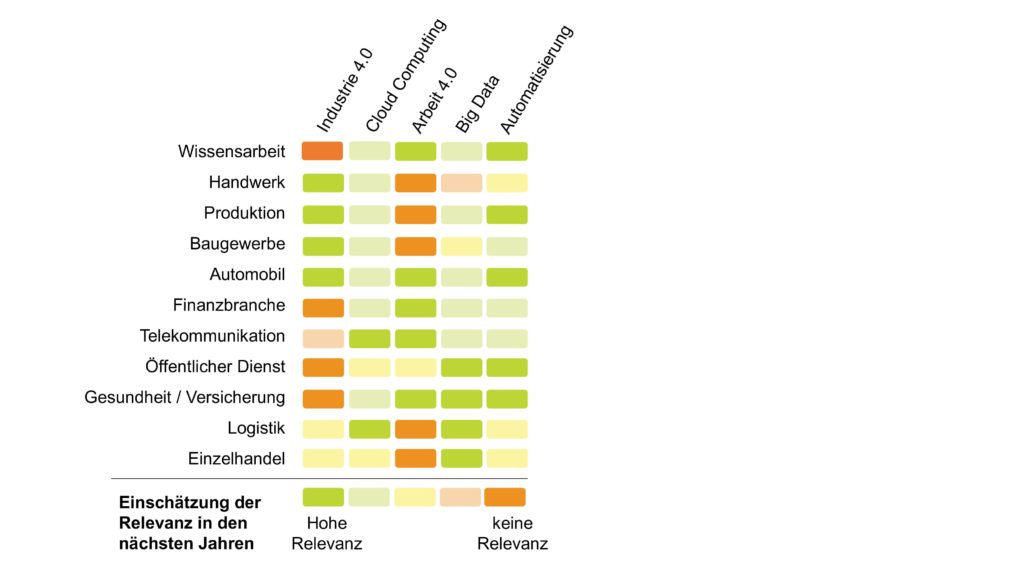Digitization can now be found everywhere and is spreading like wildfire.
I am therefore now writing a whole series of articles on the subject of digitization. My motivation behind this is that digitization means something different for every industry and type of company and I want to work out these differences. An illustration of the differences in different industries can be found in the following figure.

In this section I would like to go into the real gist of this article and illustrate digitization in the retail industry.
Industry characteristics
Typical retailers such as hairdressers, florists, bakers and the like have always seen themselves as classic service providers. While for a long time it was common practice for customers to visit local retailers and thereby support them, the retail industry is now at a critical point. Small retailers in particular saw no need for digitization or the use of big data for a long time and thus neglected the opportunities for their business. Due to a lack of technical understanding and the costs resulting from a change, they closed themselves off to agile methods and technological progress for a long time. The Internet with its large range of online shops and a much larger selection of products as well as the possibility of direct comparison is increasingly bringing retailers to their knees.
The current digitization in the retail industry
For many retailers in the retail industry, digitization has so far only meant having a website in the form of their own homepage. In order to counteract the competition of the Internet, however, more and more retailers are relying on improved customer service based on online-based functions. For example, hairdressers already offer appointments using an online form or ask customers to submit an online review via email or SMS after the appointment. But in the field of marketing too, people are increasingly advertising on the web and using the reach of social media.
In terms of an optimal customer experience, agile methods are also increasingly being used to increase the flexibility of processes. The shopping experience for the customer is promoted with sprint goals such as those provided for in Scrum. Some retailers have already recognized the need for agile and scalable IT that is required for this.
But digitization also plays a decisive role for retailers in the field of data analysis. Because here too, big data can increase efficiency with the help of intelligent software. Based on the customer data collected, it is possible to see which offers are preferred by customers or which prices are accepted for services.
Advantages of digitization in the retail industry
The focus of retail is clearly on the customer. The arrival of digitization, agility and technological innovations should strengthen the relationship with this in the future. Digitization offers various channels to keep existing customers and to win new customers. With the help of digital CRM systems, customer data can also be systematically evaluated and used as a basis for individualized offers. But also the use and distribution of internal company data and information is improved by technological tools. For example, flexible cloud solutions can make data usable and accessible at any time and from anywhere.
Overall, digitalization not only supports retailers in developing competitive advantages based on offers that are tailored directly to the customer, but also provides a foundation for new business models, such as online sales.
Tip:
If you are as excited about this topic as I am, then you can find the entire article series here !
Image source: pixabay.com
[fotolia]


